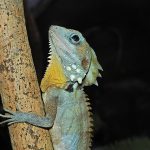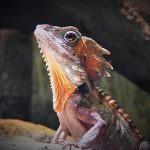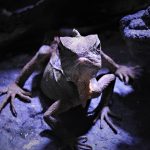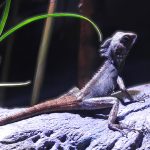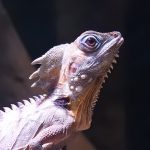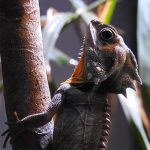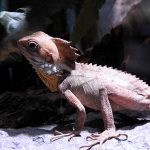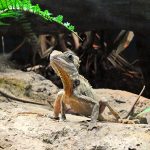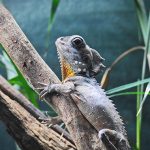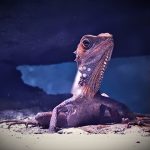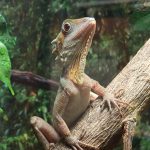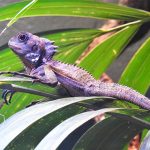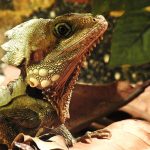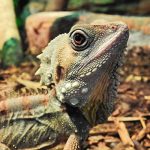BOYD'S FOREST DRAGON
Boyd’s Forest Dragon: A Living Dragon of the Rainforest
Deep within the emerald embrace of Queensland’s Wet Tropics, where shafts of sunlight pierce through towering canopies and the air is heavy with the scent of damp earth and moss, a remarkable reptile holds court in silence. This is Boyd’s forest dragon, a creature that looks as though it has stepped straight out of a time long past. Yet, it lives and thrives today in one of the oldest rainforests on Earth.
A Master of Disguise
Boyd’s forest dragon is a true artist of camouflage. Its skin is patterned in mottled shades of green and brown, echoing the play of light and leaf in the forest understory. Along its spine runs a serrated crest of spines, while its throat is adorned with a beard-like frill that enhances its dramatic, dragon-like appearance.
When motionless, the dragon is almost impossible to see. Its stillness, combined with its leaf-like form, allows it to blend seamlessly into tree trunks, lianas, and moss-covered branches. This remarkable disguise is its greatest defence against predators, making the dragon more a shadow than a creature to the casual observer.
Life in the Trees
Boyd’s forest dragon is arboreal, living primarily among the trunks and lower branches of rainforest trees. Here, it moves with deliberate slowness, each step measured, as if it were part of the forest itself.
- Diet: Insects form the bulk of its meals, which the dragon snatches with lightning precision from the air or bark.
- Thermoregulation: Unlike most reptiles that bask openly in the sun, Boyd’s forest dragon relies on the rainforest’s ambient warmth. It moves between patches of sun and shadow to regulate its body temperature, a behaviour that allows it to remain inconspicuous for hours on end.
Rituals of Courtship
The breeding season arrives with the rains, from October to January. During this time, males become more animated, displaying bright throat colours and engaging in head-bobbing and arm-waving gestures. These rituals are not merely for show; they are essential signals in the complex courtship dance of the species.
Once a female accepts a suitor, she descends to the forest floor, excavating a shallow nest in the soil where she lays 4 to 13 eggs. These eggs incubate for about three months, warmed by the earth and the rhythm of the rainforest. When the hatchlings emerge, they are fully independent—miniature dragons ready to begin life in the treetops.
A Creature of an Ancient Forest
Boyd’s forest dragon is found only in the Wet Tropics of Queensland, a World Heritage-listed region stretching from Townsville to Cooktown. These rainforests are among the oldest on the planet, harbouring species that trace their ancestry back to the time of the dinosaurs. In this sense, Boyd’s forest dragon is not just a reptile—it is a living connection to a prehistoric world.
| Feature | Boyd’s Forest Dragon |
|---|---|
| Scientific Name | Lophosaurus boydii |
| Habitat | Rainforests of north-eastern Queensland |
| Range | Townsville to Cooktown |
| Diet | Insects and other small invertebrates |
| Clutch Size | 4–13 eggs |
| Key Adaptation | Uses ambient temperature for thermoregulation |
Conservation Significance
The survival of Boyd’s forest dragon is closely tied to the health of its rainforest home. The Wet Tropics are under pressure from climate change, habitat fragmentation, and invasive species. Protecting this dragon means protecting the rainforest itself—a living library of biodiversity that sustains countless species, including our own.
A Living Myth
To see Boyd’s forest dragon is to glimpse a fragment of ancient Earth: a creature that looks like myth but is undeniably real. Its quiet resilience and delicate balance with its environment remind us of the beauty and fragility of the natural world. In preserving these rainforests, we ensure that this living dragon continues to watch silently from its mossy throne, a guardian of one of Australia’s most extraordinary landscapes.

